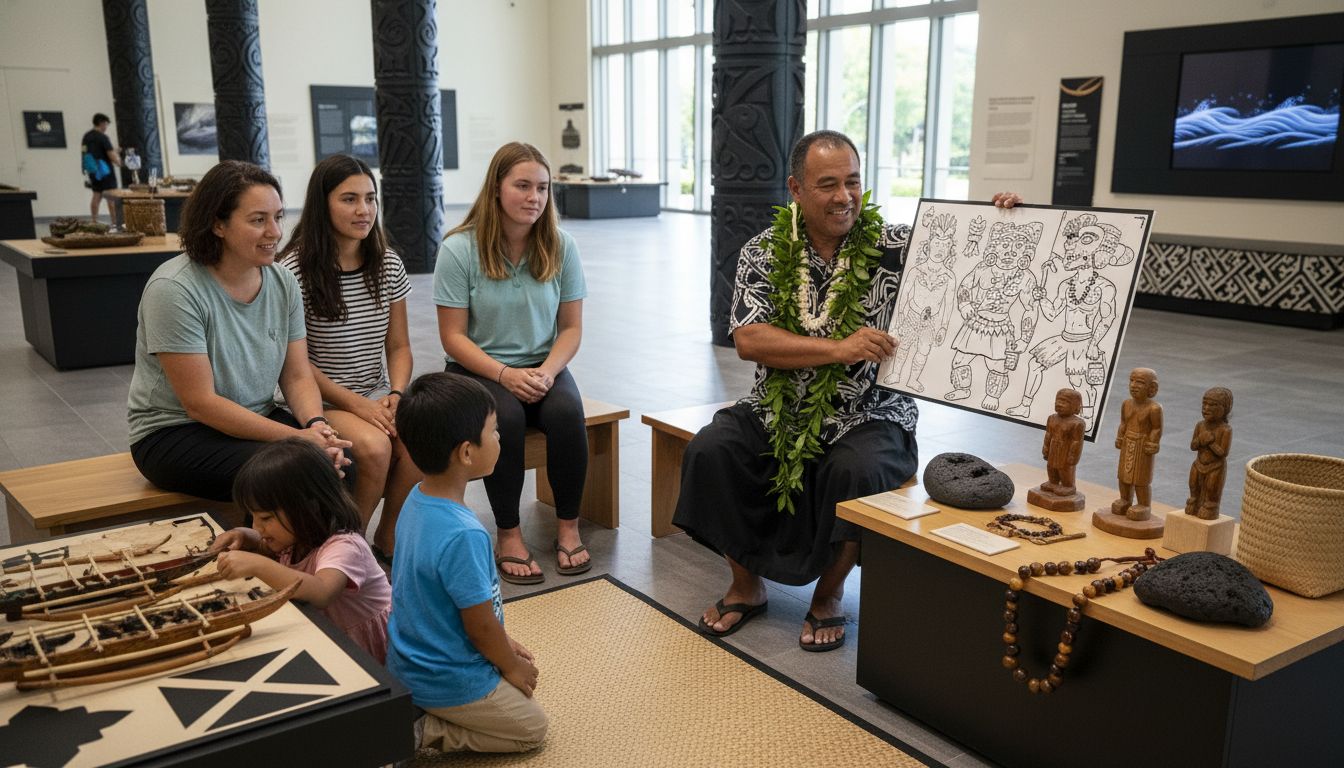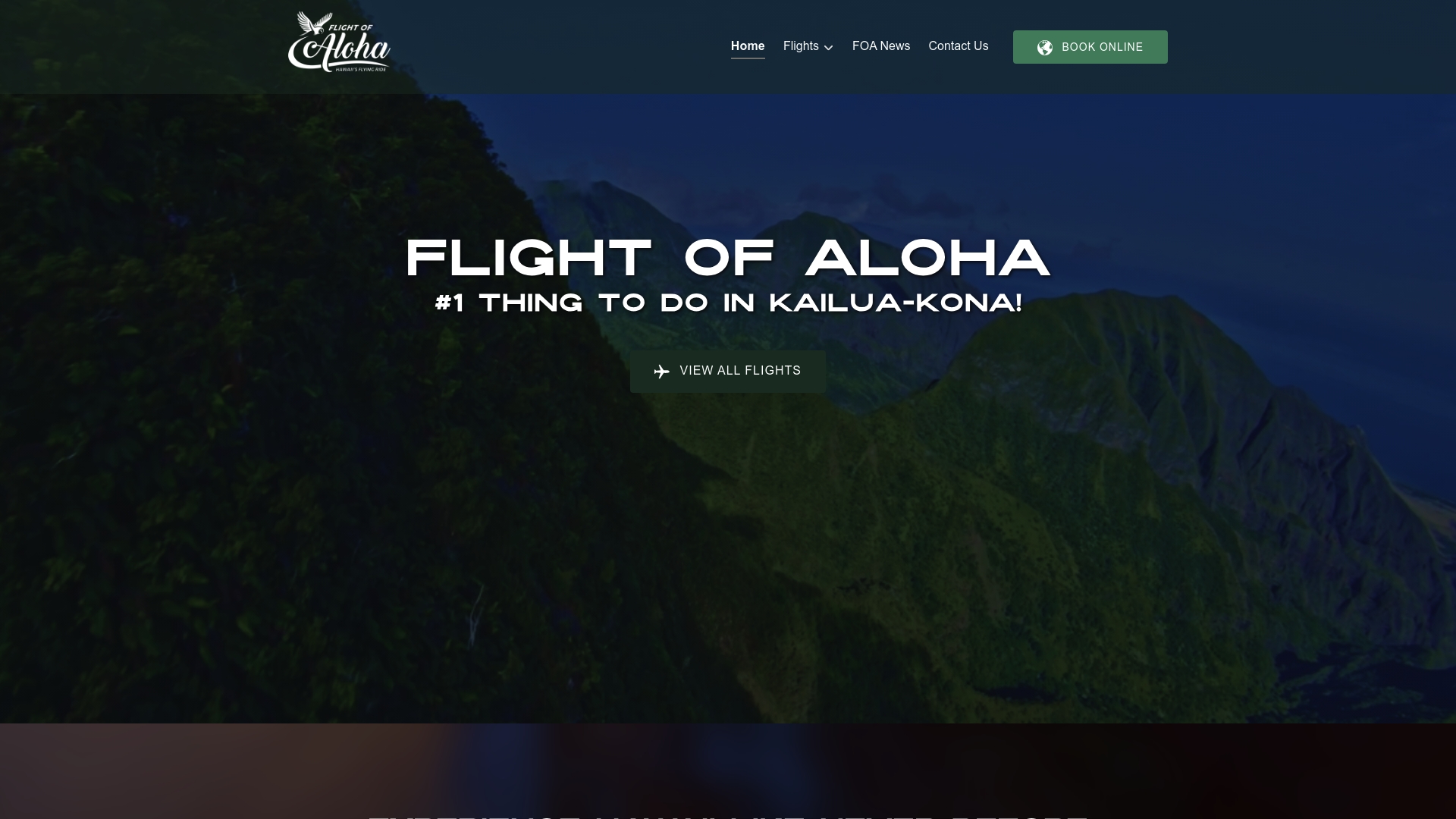Expert Tips for Family Attractions in Hawaii

Nearly 85 percent of families say that finding activities everyone enjoys is the hardest part of planning a vacation. Hawaii’s endless sunshine, cultural wonders, and stunning landscapes can feel both exciting and overwhelming when choosing where to start. With a little knowledge and the right approach, you can create a trip packed with family-friendly attractions, smooth planning tips, and experiences that spark curiosity across all ages.
Table of Contents
- Step 1: Choose The Best Family-Friendly Attractions
- Step 2: Plan Your Visit For Maximum Enjoyment
- Step 3: Book Tickets And Packages Online
- Step 4: Engage Kids With Cultural Storytelling
- Step 5: Verify Comfort And Accessibility Needs
Quick Summary
| Key Point | Explanation |
|---|---|
| 1. Choose attractions based on family interests | Select experiences that engage all ages for maximum enjoyment during the trip. |
| 2. Plan visits during optimal times | Research peak hours to avoid crowds and schedule active attractions early. |
| 3. Book tickets in advance for savings | Early online bookings often provide discounts and better overall value for family packages. |
| 4. Engage kids with cultural storytelling | Incorporate storytelling to enhance cultural appreciation and make learning enjoyable for children. |
| 5. Verify accessibility for all family members | Research and confirm comfort and accessibility features at attractions to accommodate everyone. |
Step 1: Choose the Best Family-Friendly Attractions
Selecting the perfect family attractions in Hawaii requires strategic planning and understanding what will truly delight every member of your group. Your goal is to find experiences that balance fun, education, and memorable moments for all ages.
According to kealakai, exploring diverse destinations is key to a successful family vacation. Start by considering the interests of each family member. Young children might enjoy interactive experiences with plenty of movement and engagement. Teenagers often appreciate cultural learning opportunities or adventure activities. Parents typically look for attractions that offer both entertainment and educational value.
When evaluating potential attractions, consider these critical factors. Assess the physical accessibility for all family members. Check age recommendations and any height or skill restrictions. Look for attractions that offer variety within a single experience something that can keep different age groups entertained simultaneously. Research ahead and read recent reviews from other families to understand the current experience quality.

One pro tip: Balance structured attractions with flexible exploration time. Not every moment needs to be planned. 7 Top Child-Friendly Attractions In Hawaii For Families suggests mixing organized activities with spontaneous discovery to keep energy levels high and prevent vacation fatigue.
Remember that Hawaii offers unique opportunities beyond typical tourist attractions. Cultural sites museums and interactive experiences can transform a simple vacation into an educational journey that creates lasting memories for your entire family.
Step 2: Plan Your Visit for Maximum Enjoyment
Planning your Hawaiian family attraction visit requires thoughtful preparation to ensure a smooth and enjoyable experience. Your objective is to create an itinerary that maximizes fun while minimizing potential stress and logistical challenges.
According to kealakai, strategic timing can dramatically improve your attraction experience. Start by researching peak hours and off peak times for your chosen destinations. Mornings typically offer cooler temperatures and smaller crowds which can be ideal for families with young children. Consider scheduling more active attractions earlier in the day when energy levels are highest and younger family members are most alert.
When developing your visit plan focus on practical logistics. Check attraction websites for current operating hours ticket prices and any advance booking requirements. Many Hawaiian attractions recommend online reservations especially during peak tourist seasons. Pack essentials like water bottles sunscreen comfortable walking shoes and lightweight layers that can adapt to changing weather conditions. Consider bringing a small backpack with snacks and basic first aid items to keep everyone comfortable.
One critical pro tip: Build flexibility into your schedule. 7 Ways To Enjoy Year-Round Family Fun In Hawaii recommends leaving buffer time between attractions. This allows for unexpected discoveries unplanned breaks and spontaneous moments that often become the most cherished memories.
Remember that successful vacation planning balances structured activities with relaxed exploration. Hawaii offers incredible diversity in experiences so remain open to adjusting your plans based on your family’s energy and interests. The goal is creating memorable moments not adhering to a rigid schedule.
Step 3: Book Tickets and Packages Online
Booking tickets and packages for Hawaiian family attractions requires a strategic approach to ensure the best value and most seamless experience. Your goal is to secure the right tickets at the right price while avoiding last minute complications.
According to kealakai, early preparation is crucial when securing attraction reservations. Start by comparing ticket prices across different platforms and official attraction websites. Many Hawaiian attractions offer online booking systems that provide discounts for advanced purchases. Look for family packages that might include multiple attraction entries or bundled experiences which can significantly reduce overall vacation costs.
When booking online pay close attention to specific details. Verify age restrictions group rates and any special requirements for each attraction. Some venues offer discounted rates for children seniors or local residents. 10 Must-Do Kid-Friendly Activities In Kona recommends checking for combo tickets that can provide more comprehensive experiences while offering better overall value. Make sure to read the fine print regarding cancellation policies refund options and any potential blackout dates.
One critical pro tip: Create a separate email folder for all your booking confirmations. Screenshot or save digital tickets and keep both electronic and physical copies easily accessible during your trip. This ensures you have backup documentation in case of any technical issues.
Remember that online booking is about more than just purchasing tickets. It is an opportunity to plan and customize your family vacation experience. Take time to explore different package options read reviews and select experiences that align with your family interests and energy levels.
Step 4: Engage Kids with Cultural Storytelling
Cultural storytelling transforms a simple Hawaiian vacation into an immersive learning experience for children. Your mission is to help your kids connect deeply with Hawaiian traditions through engaging narratives that spark curiosity and imagination.
According to maui, cultural engagement through storytelling offers a powerful way to introduce children to Hawaiian mythology and traditions. Begin by seeking out attractions and experiences that integrate storytelling into their presentations. Look for guided tours museums cultural centers and interactive exhibits that share legends through animated storytelling techniques. Many Hawaiian attractions offer programs specifically designed to captivate young minds by transforming historical and mythological stories into exciting narratives.
When engaging with cultural stories encourage active participation from your children. Ask them questions about the characters motivations and lessons within the stories. maui highlights the importance of making cultural learning interactive. Prompt your children to imagine themselves as characters in the story ask them what they would do in similar situations or invite them to act out parts of the legend. This approach transforms passive listening into an engaging learning experience.
One critical pro tip: Prepare basic background information about Hawaiian mythology before your trip. Familiarize yourself and your children with a few key legends so they can better appreciate the context of stories they will encounter. This preparation helps children feel more connected and excited about the cultural experiences.
Remember that cultural storytelling is about more than entertainment. It is a bridge that connects generations helps preserve important traditions and allows children to develop a deeper understanding and respect for Hawaiian culture. Each story is an opportunity to create lasting memories and inspire lifelong curiosity about the rich heritage of the Hawaiian Islands.

Step 5: Verify Comfort and Accessibility Needs
Ensuring comfort and accessibility is crucial for creating a memorable family vacation in Hawaii. Your goal is to proactively address potential challenges and create an inclusive experience that accommodates everyone in your family.
According to kealakai, thoroughly investigating attraction accessibility features can dramatically improve your family experience. Start by contacting attractions directly to understand their specific accommodation options. Ask about wheelchair accessibility stroller paths rest areas nursing facilities and availability of assistive technologies. Consider the physical capabilities of all family members including grandparents young children or anyone with mobility challenges.
When evaluating comfort and accessibility conduct comprehensive research beyond basic requirements. Review online forums and recent visitor reviews that discuss specific accessibility experiences. Look for detailed information about walking distances between exhibits temperature controlled environments availability of shade rest areas and proximity to restrooms. Pay special attention to attractions that offer sensory friendly options for children with specific needs such as quiet spaces or reduced stimulation zones.
One critical pro tip: Create a personalized accessibility checklist before your trip. Document each family members specific requirements such as medication needs mobility assistance dietary restrictions and potential sensory sensitivities. This proactive approach helps you quickly identify and resolve potential challenges during your Hawaiian adventure.
Remember that accessibility is about more than physical accommodations. It is about creating an inclusive environment where every family member can fully participate and enjoy the experience. Approach each attraction with flexibility patience and a commitment to ensuring everyone feels comfortable and valued.
Discover Hawaii Like Never Before with Flight of Aloha
Family trips to Hawaii are all about creating unforgettable moments while balancing fun, culture, and comfort. The challenge many parents face is finding attractions that keep every family member engaged without overwhelming the day with complex logistics or crowd stress. If you want to immerse your kids in Hawaiian legends while enjoying a smooth, accessible experience that sparks imagination and connection Flight of Aloha offers the perfect solution.
Experience the magic of flying over Hawaii through breathtaking 8K visuals combined with wind, scents, and motion effects—all rooted in authentic cultural storytelling. This immersive flying theater attraction brings the stories highlighted in your planning to life and ensures everyone in the family feels part of Hawaii’s rich heritage. Whether you seek VIP packages or an annual pass for repeated adventures, you can effortlessly book your visit online and tailor your experience to your family’s needs.
Ready to turn your family vacation into a captivating cultural journey that thrills both kids and adults?

Explore our unique attraction at Flight of Aloha, where stories meet breathtaking adventure. Check details, secure your tickets, and start planning a day filled with wonder and aloha today. Don’t wait to create those lasting family memories in Kailua-Kona that your children will treasure forever.
Frequently Asked Questions
How can I choose the best family-friendly attractions in Hawaii?
To choose the best family-friendly attractions in Hawaii, consider the interests of all family members, including children, teenagers, and adults. Make a list of potential attractions and evaluate them based on accessibility, age recommendations, and reviews. Aim to mix structured activities with free exploration to keep everyone engaged.
What is the best time to visit family attractions in Hawaii?
The best time to visit family attractions in Hawaii is typically in the morning when temperatures are cooler and crowds are smaller. Plan to schedule more active attractions earlier in the day when energy levels are highest, especially for younger children.
How do I book tickets for family attractions in Hawaii?
To book tickets for family attractions in Hawaii, compare prices across various platforms and focus on official attraction websites that may offer discounts for advance purchases. Look for family packages that offer bundled experiences to save on costs, and reserve tickets online to avoid last-minute complications.
How can I engage my kids with Hawaiian cultural storytelling during our visit?
Engage your kids with Hawaiian cultural storytelling by selecting attractions that incorporate storytelling into their presentations, such as museums and guided tours. Encourage active participation by asking questions and inviting them to imagine themselves as characters in the stories. Aim to create a few key narratives together before your trip to enrich their understanding.
What should I consider regarding comfort and accessibility at family attractions?
When considering comfort and accessibility at family attractions, check each venue for wheelchair access, stroller paths, and rest areas. Create a personalized checklist for family members’ specific needs, such as mobility assistance or dietary restrictions, to ensure a smooth experience during your visit.
How can I ensure a flexible itinerary while visiting attractions in Hawaii?
To ensure a flexible itinerary while visiting attractions in Hawaii, build buffer time between planned activities to allow room for spontaneity or unexpected discoveries. Leave some parts of your schedule open for unplanned breaks or activities based on your family’s interests and energy levels throughout the day.
